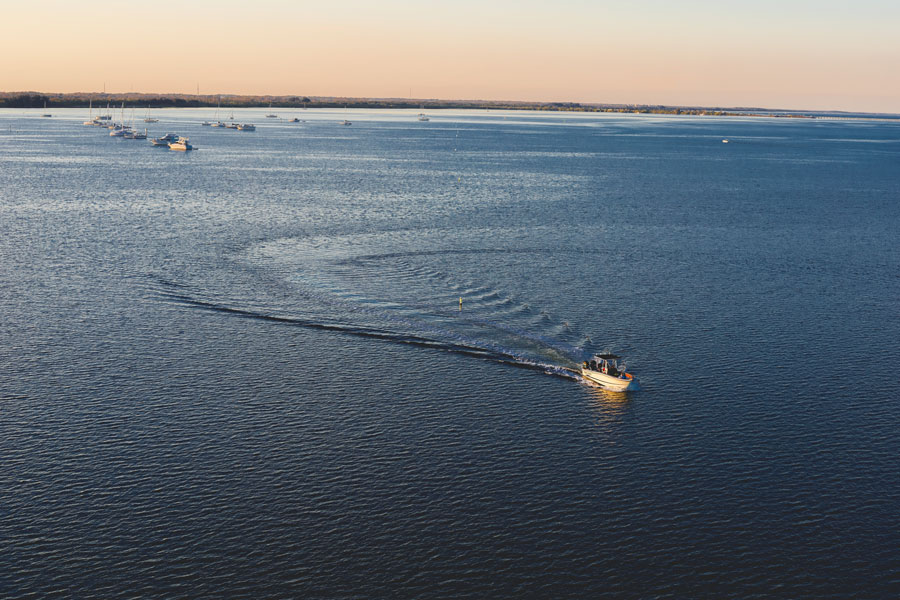Indian River Lagoon

The Indian River Lagoon (IRL) is one of Florida’s most remarkable natural ecosystems, stretching over 156 miles along the state’s Atlantic Coast. Spanning from Volusia County in the north to Martin County in the south, this lagoon system is recognized as one of the most biodiverse estuaries in North America. With its intricate network of rivers, creeks, and wetlands, the Indian River Lagoon is a vital resource for wildlife, recreation, and scientific research.
A Biodiversity Hotspot
- Ecological Importance:
- The Indian River Lagoon is home to more than 4,300 species of plants and animals, including over 35 species listed as threatened or endangered.
- This unique estuary supports habitats such as mangrove forests, seagrass beds, salt marshes, and sandy shorelines.
- Marine Life:
- The lagoon serves as a nursery for fish, shrimp, and crabs, making it an essential breeding ground for marine species.
- Iconic animals like manatees, dolphins, and sea turtles rely on the lagoon for feeding and shelter.
- Birdwatching Haven:
- Over 300 species of birds, including pelicans, herons, and roseate spoonbills, thrive in and around the lagoon, making it a hotspot for birdwatchers.
Recreation and Activities
- Boating and Kayaking:
- The calm waters of the lagoon make it ideal for boating, kayaking, and paddleboarding.
- Visitors can explore mangrove tunnels, secluded islands, and open waterways.
- Fishing:
- The lagoon is a world-class fishing destination, known for species such as redfish, snook, and tarpon.
- Both recreational and charter fishing opportunities abound in the area.
- Wildlife Observation:
- Eco-tours offer guided opportunities to spot dolphins, manatees, and a variety of bird species in their natural habitat.
- Swimming and Snorkeling:
- Designated areas within the lagoon provide safe spots for swimming and snorkeling, where visitors can observe seagrass beds and marine life up close.
Educational and Cultural Significance
- Research and Conservation:
- The lagoon is a hub for scientific research, with organizations such as the Indian River Lagoon National Estuary Program and local universities conducting studies to protect and restore this vital ecosystem.
- Cultural Heritage:
- The lagoon has been central to Florida’s history, from Native American settlements to its role in the state’s fishing and boating industries.
- Nature Centers and Aquariums:
- Facilities such as the Smithsonian Marine Ecosystems Exhibit in Fort Pierce provide educational exhibits about the lagoon’s ecology and conservation.
Conservation Challenges
- Environmental Threats: The Indian River Lagoon faces challenges such as pollution, habitat loss, and algal blooms caused by nutrient runoff.
- Restoration Efforts: Local and state organizations are working on initiatives like seagrass restoration, stormwater management, and public education to preserve the lagoon.
- Community Involvement: Citizen science programs and volunteer opportunities, such as water quality monitoring and shoreline cleanups, encourage public participation in conservation.
Vicinity of the Lagoon
Nearby Attractions
- Merritt Island National Wildlife Refuge: Located near Cape Canaveral, this refuge offers hiking trails, birdwatching, and pristine natural habitats, allowing visitors to experience Florida’s diverse flora and fauna.
- McKee Botanical Garden: This lush oasis in Vero Beach features diverse plant species, waterlily-filled ponds, and historic structures, providing a serene environment for leisurely walks and nature appreciation.
- Vero Beach: A scenic coastal town offering access to the lagoon, eco-tours, and waterfront dining.
Visitor Tips
- Bring Binoculars: The lagoon is perfect for wildlife observation, so binoculars are essential for spotting birds and marine life.
- Eco-Friendly Practices: When exploring, follow “Leave No Trace” principles to help preserve the lagoon’s delicate ecosystems.
- Wear Sun Protection: Bring sunscreen, hats, and sunglasses to stay protected during outdoor activities.
- Check Local Tours: Many local guides and eco-tour operators provide in-depth experiences of the lagoon’s wildlife and history.
Visitor Information
- Access Points: Public parks, boat ramps, and nature reserves provide multiple entry points to the lagoon along its 156-mile stretch.
- Best Time to Visit: Early mornings and evenings are ideal for wildlife viewing and avoiding the midday heat.
- Fees: Some parks and guided tours may charge nominal fees, while many access points are free.
- Contact: For more information, visit the Indian River Lagoon National Estuary Program website or contact local visitor centers.
Why Visit the Indian River Lagoon?
The Indian River Lagoon is a living testament to Florida’s natural beauty and biodiversity. Whether you’re kayaking through mangroves, spotting dolphins, or learning about conservation efforts, the lagoon offers an enriching and unforgettable experience. Its significance as both an ecological treasure and a recreational haven makes the Indian River Lagoon a must-visit destination for nature lovers and adventurers alike.
For more information visit: https://www.floridastateparks.org/learn/ecology-indian-river-lagoon 

